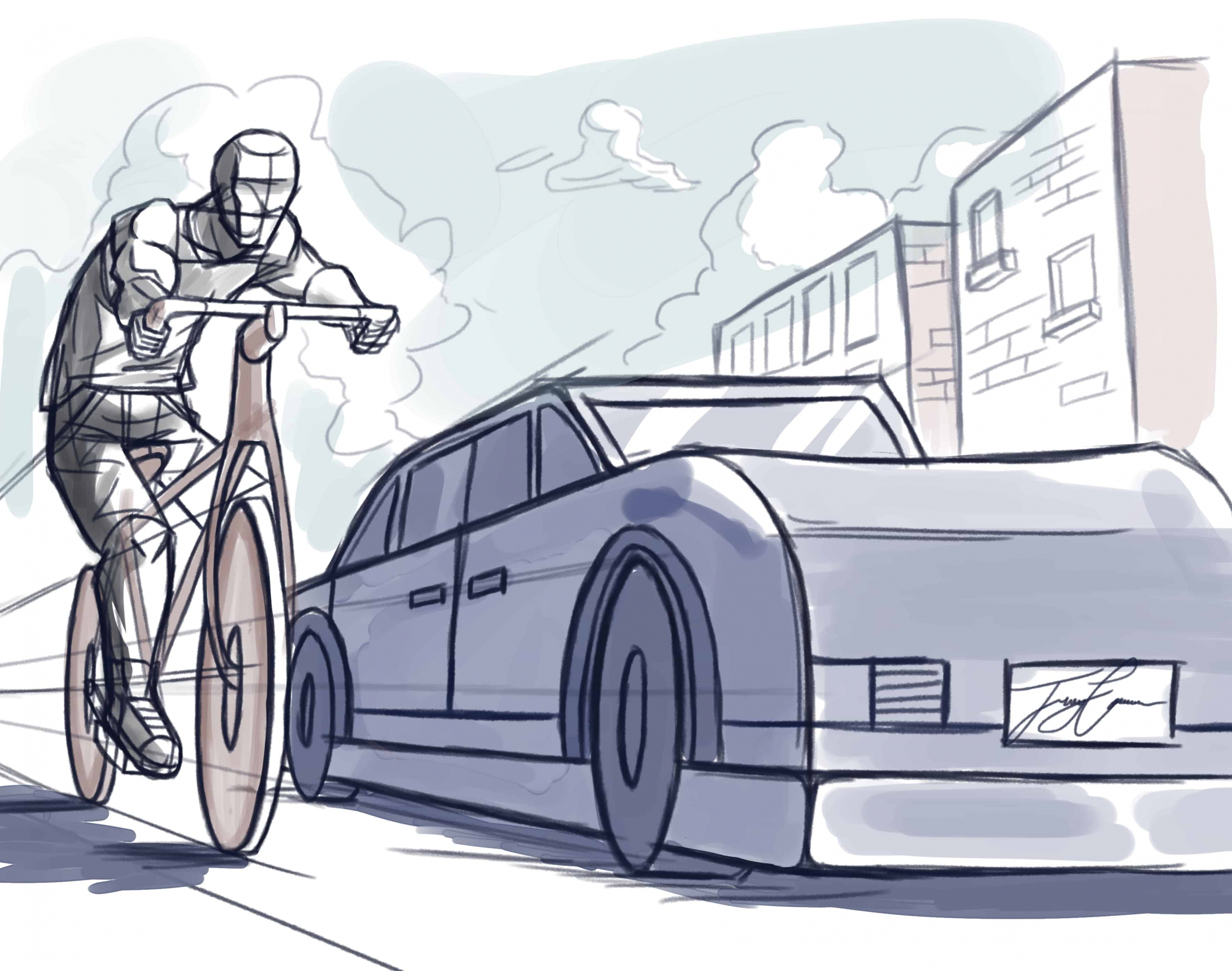The common portrayal of cyclists in downtown Toronto is that of a careless and reckless lot: dipping in and out of traffic, passing stop lights and stop signs, and wreaking havoc on our roads. Living in the city does not instill a fear of cars, but of bicycles. Even so, to force the brunt of the burden for accidents and fatalities on the road onto cyclists is unfair.
Toronto drags behind other cities in road safety because it lacks a vibrant cyclist culture that can coexist with motor transportation. Recently, Dalia Chako, 58, was fatally struck by a truck driver while making a turn on Bloor and St. George.
According to CBC News, her son, Skylor Brummans, “believes the truck driver involved… just wasn’t looking for cyclists during [the] turn, which led to the collision.” Although cyclists are present in the downtown area, their presence is often not thought of as part of our urban space.
This incident shows the large disconnect between cyclists and drivers in Toronto. This mental block is what deters both sides from taking caution on the roads, and adds to the lack of progress in funding and infrastructure necessary to create a safer space for everyone.
In 2016, John Tory announced a new “comprehensive” safety plan called Vision Zero, which aims to reduce “traffic-related fatalities and serious injuries on the streets of Toronto” from 2017 to 2021. Just over two years since this plan was announced, the administration has failed to make vital improvements to not only the infrastructure of the city, but also relationships on the road.
The failure to make any noticeable improvements on the state of traffic-related fatalities in the city of Toronto has caused an uproar, and despite promises to improve road safety for Toronto cyclists, this year has been one of the deadliest for both cyclists and pedestrians.
Toronto falls behind cities such as New York, which has made drastic investments in infrastructure to reduce the number of collisions and drivers on the road. In the past four years, New York has significantly reduced its number of pedestrian deaths. An investigation conducted by the Toronto Star revealed that the measures outlined in Toronto’s unrealized plans for road safety parallel the successful actions taken by New York to safeguard its cyclists: “redesigned roads and narrowed lanes to slow down traffic; increased use of bicycle lanes; reduced speed limits and increased pedestrian crossings and markings.”
How has New York, a city much larger, more populous, and more chaotic than Toronto, surpassed us in safety and reconstruction?
Toronto needs to follow New York’s example with a major upgrade to meet the demands of its growth. Physical and mental coexistence between pedestrians, cyclists, and cars on our roads is vital to the transformation of the Toronto city space. We therefore need to change our mental attitude and demand space for a safe and effective cycling culture, especially given its benefits.
As an aerobic activity, cycling is a full-body workout that benefits those who spend much of their working and leisure time sedentary. By pushing cycling as a vital activity integral to the urban lifestyle, people are encouraged to be more active rather than exercising as an afterthought or hobby. Exercise is also linked to improvements in mood through the release of endorphins, providing some relief from the mental health crisis present in society.
While some may argue that cycling gear and upkeep is costly, Toronto’s ubiquitous bike sharing stations help alleviate that cost. Otherwise, cycling also cuts the financial and environmental costs of gas. which the city can further reduce by making public transportation more accessible and cheaper.
It is true that many cyclists are not cautious on the road, and reminding drivers of a presence that is given little voice or attention on the streets of Toronto is hard. The solution requires an investment in infrastructure and funding that asserts cyclists’ presence and equal rights to the road. We need better infrastructure, not just for the sake of cyclists and pedestrians, but for all commuters.
Rehana Mushtaq is a third-year English and Religion student at University College.


